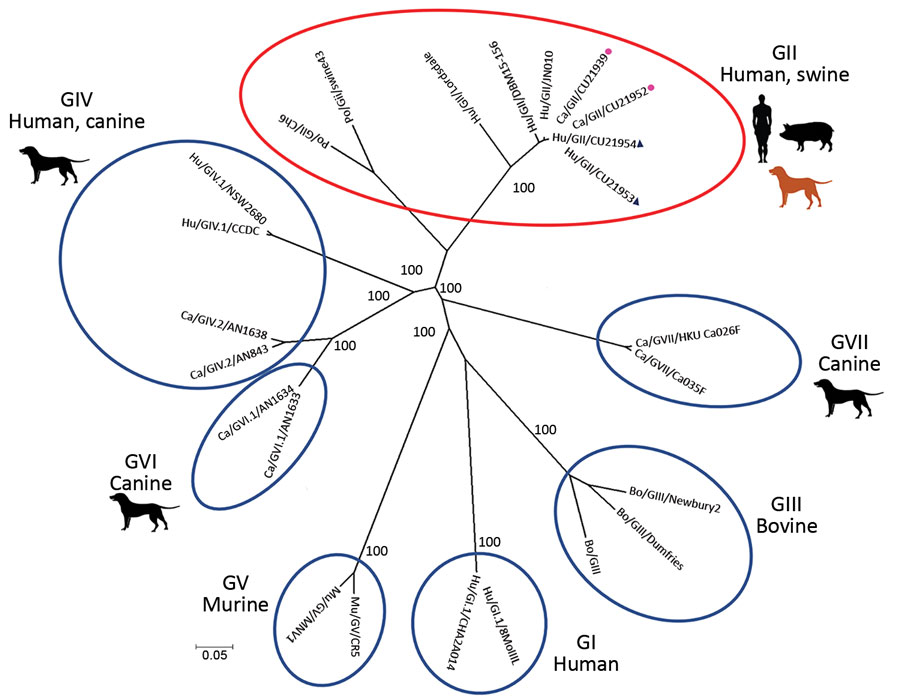Volume 26, Number 2—February 2020
Dispatch
Human Norovirus Infection in Dogs, Thailand
Figure 1

Figure 1. Phylogenetic tree of whole-genome sequences of canine noroviruses (red dots) and human noroviruses (blue triangles) from Thailand and reference sequences. Genogroups GI–GVII are indicated by red oval and blue ovals. The tree was constructed by using MEGA version 7.026 (https://www.megasoftware.net) with the neighbor-joining algorithm and bootstrap analysis with 1,000 replications. Numbers along branches are bootstrap values. Scale bar indicates nucleotide substitutions per site.
Page created: January 20, 2020
Page updated: January 20, 2020
Page reviewed: January 20, 2020
The conclusions, findings, and opinions expressed by authors contributing to this journal do not necessarily reflect the official position of the U.S. Department of Health and Human Services, the Public Health Service, the Centers for Disease Control and Prevention, or the authors' affiliated institutions. Use of trade names is for identification only and does not imply endorsement by any of the groups named above.